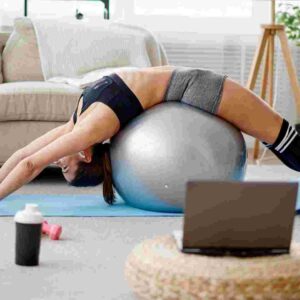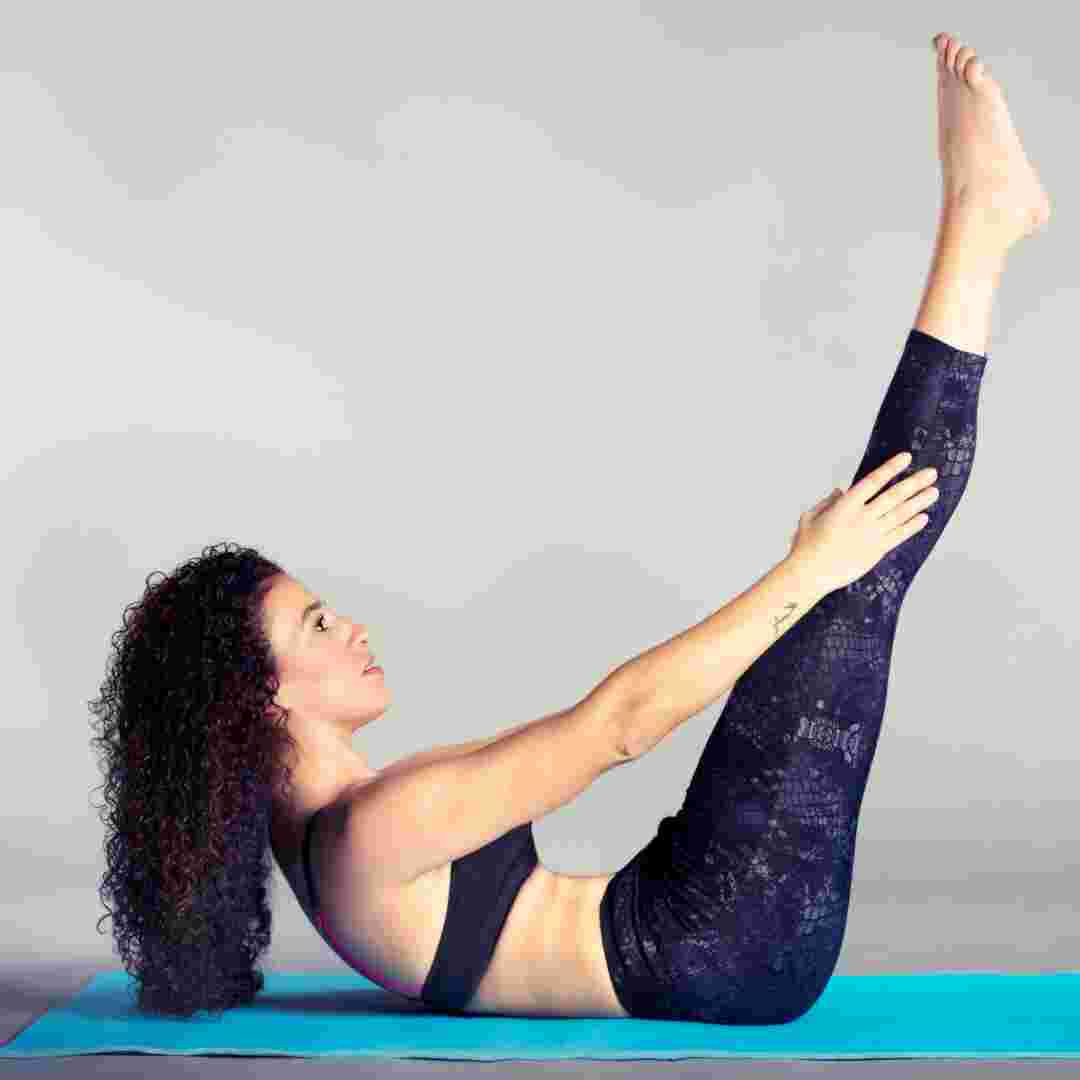Contents Table
Introduction
Pilates Hip Flexor Stretching Exercises to Avoid After Hip Replacement
Avoid Twisting and Rotating in Pilates After Hip Replacement
High-Impact Pilates Exercises to Avoid After Hip Replacement
Q&A
Conclusion
"Protect your hip replacement: Avoid these Pilates exercises."
Introduction
To avoid issues after hip replacement surgery, exercise carefully. Pilates is a popular activity that can help hip replacement patients, however some movements should be avoided. This article discusses hip replacement surgery-related pilates exercises to avoid.
Pilates Hip Flexor Stretching Exercises to Avoid After Hip Replacement
Hip replacement surgery is a typical treatment for hip joint discomfort and mobility. Take precautions after hip replacement surgery to ensure a smooth recovery. Avoiding Pilates exercises that stress the hip joint is important.
Pilates strengthens core muscles, improves flexibility, and aligns the body. Pilates can help you stay active and healthy, but you must be careful following hip replacement surgery.
Hip flexor stretching should be avoided after hip replacement. The hip flexors flex the hip joint. These front-hip muscles might tighten and shorten from sitting or inactivity.
Pilates uses hip flexor stretching to increase hip flexibility and range of motion. These exercises can stress the hip joint, causing problems and slowing hip replacement rehabilitation.
Lunges, pigeon poses, and butterfly stretches should be avoided after hip replacement surgery. Deep hip flexor stretching can induce hip pain in these activities.
Instead of hip flexor stretching, hip replacement patients can focus on safe and useful Pilates activities. Pelvic tilt, bridge, and leg slide are exercises.
Pelvic tilt is a simple workout that involves reclining on your back with bent legs and flat feet. From here, you can tighten your core muscles and tilt your pelvis forward and backward to strengthen your lower back and abdominal.
Bridge exercise is another hip replacement recovery benefit. You lie on your back with your knees bent and feet flat for this exercise. Lifting your hips off the ground engages your glutes and hamstrings, strengthening your lower body.
The leg slide is a moderate workout that involves reclining on your back with bent knees and flat feet. You can slide one leg out to the side with your foot on the ground and back in from this position. This exercise improves hip flexibility without stressing the joint.
In conclusion, hip replacement surgery involves extensive post-operative care. After hip replacement surgery, avoid Pilates exercises that stress the hip. Post-hip replacement patients should avoid hip flexor stretching. Instead, after hip replacement surgery, focus on safe and useful Pilates activities like the pelvic tilt, bridge, and leg slide. After hip replacement surgery, being conscious of your activities will help you recover and enhance your health.
Avoid Twisting and Rotating in Pilates After Hip Replacement
Hip replacement surgery is a typical treatment for hip joint discomfort and mobility. Take precautions after hip replacement surgery to ensure a smooth recovery. Avoiding Pilates exercises that stress the hip joint is important.
Pilates strengthens core muscles, improves flexibility, and aligns the body. Pilates can help you stay active and healthy, but you must be careful following hip replacement surgery.
Twisting and rotating Pilates activities should be avoided after hip replacement. These movements can stress the hip joint, causing pain, discomfort, and injury.
After hip replacement surgery, avoid twisting and rotating workouts like the spine twist, saw, and criss-cross. Twisting the body and turning the hips can strain the hip joint.
Hip replacement patients should do mild, low-impact exercises instead than twisting and rotating. Hip replacement patients can benefit from pelvic tilt, bridge, and leg slide exercises.
Hip replacement patients should avoid twisting and rotating movements and monitor their range of motion. Avoid hip overextension to avoid pain.
After hip replacement surgery, work with a competent Pilates instructor who has experience working with joint replacement patients to perform Pilates safely. Your teacher can help you customise exercises for safety and effectiveness.
In addition to practising with a skilled Pilates instructor, listen to your body and go slow. After hip replacement surgery, you may feel stiff and uncomfortable, so be patient and don't push yourself.
In conclusion, hip replacement patients should be careful when doing Pilates exercises. Avoid twisting and rotating to avoid hip tension. Choose gentle, low-impact exercises that are safe and beneficial for you. You can safely and effectively incorporate Pilates into your post-surgery recovery plan by working with a trained teacher and listening to your body.
High-Impact Pilates Exercises to Avoid After Hip Replacement
Hip replacement surgery is a typical treatment for hip joint discomfort and mobility. After hip replacement surgery, avoid activities that could injure or dislocate your hip. Pilates is a popular workout that improves flexibility, strength, and balance. Some Pilates workouts should be avoided after hip replacement.
High-impact activities overload the hips via jumping, bouncing, or abrupt motions. These exercises may dislocate the hip or harm the implant. Therefore, after hip replacement surgery, avoid high-impact Pilates activities.
Jumping jacks are not recommended after hip replacement. Jump with your legs apart and arms above your head in this exercise. Hip joint tension and dislocation might result from this movement. Stepping sideways while raising your arms is a low-impact form of this workout.
Plyometric lunges should be avoided after hip replacement. Jumping and switching legs in a lunge is this workout. Hip joint tension and dislocation might result from this movement. Change this workout to a stationary lunge without jumping.
Avoid burpees after hip replacement surgery. This workout combines jumping, squatting, and pushing up. Hip joint tension and dislocation might result from this movement. Do a knee-up and walk back instead of jumping to alter this exercise.
High-impact exercises are not the only ones to avoid after hip replacement. Also avoid jumping rope, high knees, and jumping squats. These workouts stress the hip and increase dislocation risk. Do low-impact variations like marching in place or squatting without jumping.
Listen to your body and avoid hip-pain exercises. Stop Pilates and see a doctor or physical therapist if you feel pain. They can offer hip-safe tweaks or workouts.
After hip replacement surgery, avoid high-impact Pilates workouts. These workouts stress the hip and increase dislocation risk. You can adapt or execute low-impact versions of these exercises to increase flexibility, strength, and balance without risking your hip joint. Listen to your body and talk to your doctor or physical therapist if you have concerns.

Q&A
1. After hip replacement, which Pilates exercises should be avoided?
Avoid excessive hip flexion, adduction, and internal rotation following hip replacement surgery. These include single-leg circles, criss-crosses, and spine stretches forward.
2. Is Pilates good after hip replacement?
Yes, Pilates can help after hip replacement. Working with a trained Pilates instructor who can alter routines to reduce hip stress is crucial.
3. How long after hip replacement surgery should Pilates begin?
Before commencing Pilates, wait 6-8 weeks following hip replacement surgery. After surgery, visit a doctor before commencing an exercise programme.
Conclusion
Conclusion: After hip replacement surgery, avoid hip-stressing Pilates activities. Overflexing, rotating, or adducting the hips are examples. To identify safe and effective workouts for your recovery, see a physical therapist or healthcare provider.


